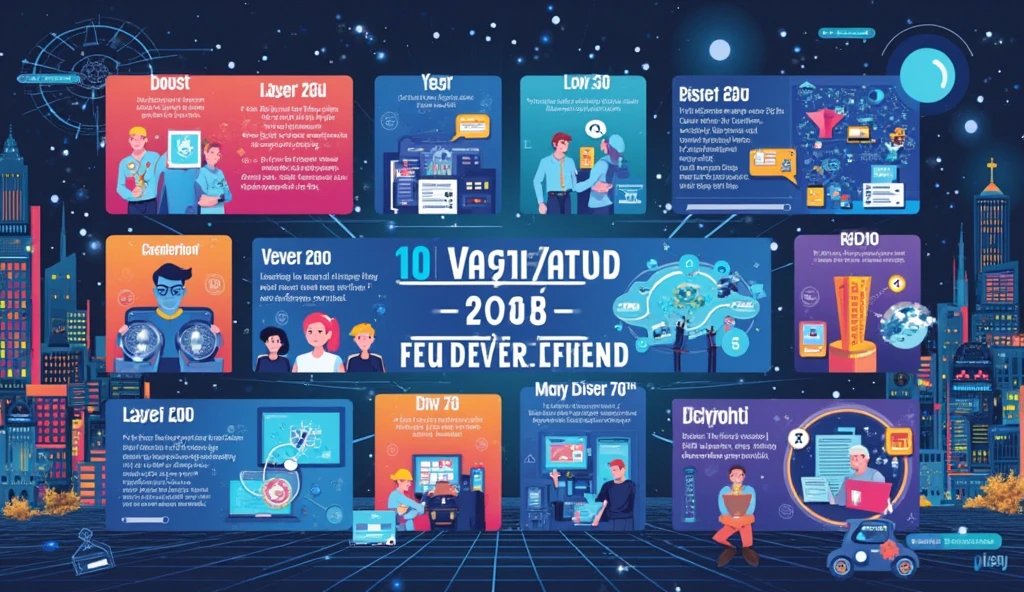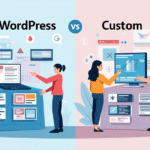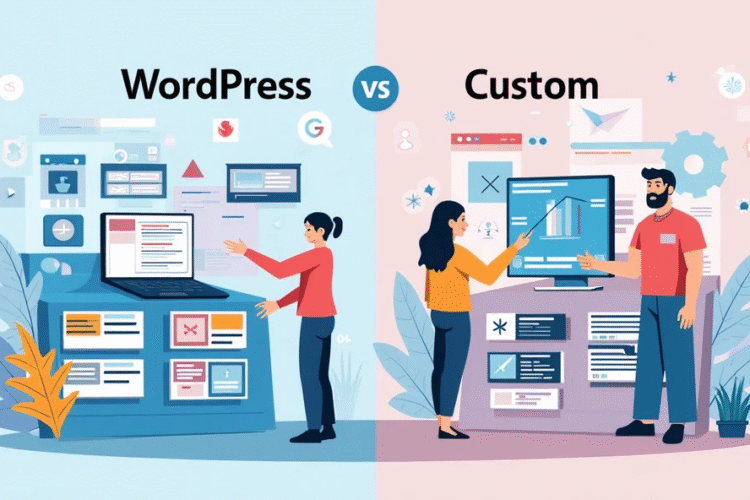
The website development industry is changing quicker than ever in 2025. Companies don’t simply want basic websites anymore; they need ones that are fast, responsive, use AI, and have cutting-edge UX/UI design to stay ahead of the competition. No matter if you’re a developer, a startup, or a well-known brand,
To stay alive and expand, you need to grasp the most important website development trends in 2025. These changes will affect how people use the internet and how businesses turn visitors into sales. This handbook talks about the newest web technologies, smart design systems, and important tactics that all businesses should use. So, if you want to take over the digital world, keep reading. The future of web development starts today.
1. Websites with AI and smart personalization
Websites that fit everyone are a thing of the past. AI-powered websites will offer smart customisation that changes in real time by 2025. Sites now use machine learning algorithms to:
- Customize content based on how visitors act.
- Change the layout and visuals to fit what the user wants.
- Give help with chatbots around the clock.
Amazon’s AI engine, for instance, proposes things based on your browsing history, the weather, and even the type of device you’re using. Now, all websites can do this.
Why it matters: People want things that are important to them. Personalized websites get more people to stay on them, lower bounce rates, and boost conversions.
2. Optimizing voice search for modern interfaces
“Hey Siri, look for a web developer close to me.”
Welcome to the day of voice-first interfaces. With smart assistants on the rise, websites are now optimizing for voice search by:
- Using text that sounds like it was written by a person.
- Adding navigation that works with voice.
- Adding structured data to make it easier for crawlers to find.
Why it matters: Voice searches will make up 58% of all online searches in 2025. You’re not visible if your website isn’t ready.
3. PWAs, or Progressive Web Apps Taking Over Mobile UX
PWAs are web apps that work like native apps but don’t need to be downloaded.
Advantages of PWAs:
- Access without the internet
- Loading very quickly
- Push notifications
Why it matters: PWAs get 36% more people to use them than regular mobile sites. You could call them the secret weapon in your mobile approach.
4. Serverless architecture for websites that can grow
What are traditional servers? Not fast enough, too clunky.
More businesses are moving to serverless architecture in 2025. They are doing this with platforms like AWS Lambda, Google Cloud Functions, and Azure.
Pros:
- Scaling automatically
- Less expensive
- Deployments that happen faster
Why it matters: You don’t have to take care of the infrastructure. Just work on adding features that your users will adore.
5. Use motion UI and micro-interactions to get people involved
Animations are more than simply pretty pictures now. Micro-interactions and motion UI make websites easier to use and more fun.
For example:
- Effects when you hover over buttons
- Animations for swiping
- Spinners for loading
Why it matters: These small hints help users, make the UX better, and give your brand a sleek, modern look.
6. Development Platforms with Low-Code and No-Code
You don’t have to write thousands of lines of code if you can drag and drop.
In 2025, low-code and no-code platforms like Webflow, Bubble, and Wix Studio are quite popular.
Who it’s for:
- Business owners
- Designers
- Startups that aren’t tech-related
Why it matters: You can launch sooner, spend less, and make adjustments in real time without needing a developer.
7. Dark Mode & Design That Is Easy to Use
Dark mode is not only cool, it’s also easy to use.
By 2025, websites must be able to:
- Switch between light and dark themes
- Following the WCAG
- Using the keyboard to move around
- Support for screen readers
Why it matters: Accessibility is now a must. It’s the right thing to do and the law.
8. Web Development Trends in Cybersecurity
Cyber dangers are getting better, therefore you need to improve your protection.
What will be popular in 2025:
- Architecture with no faith
- MFA, or multi-factor authentication
- Coding that is safe by design
- Scanning for vulnerabilities automatically
Why it matters: If your website breaks or spills data, users won’t trust your brand. End.
9. API-First and Headless CMS
Strapi, Contentful, and Sanity are examples of headless CMS platforms that are changing the way content is distributed.
Pros:
- Separate the front end from the back end.
- Share content across platforms including the web, mobile, and IoT.
- Very quick performance
What it means: Adaptability. You can change the look of your front-end without changing the way your content is organized.
10. Eco-friendly and long-lasting web development methods
The internet gives off CO2. Yes, for real.
In 2025, developers will work on making websites that are good for the environment:
- Design that is light
- Green hosting companies
- Code that works well
Why it matters: Customers want brands that are good for the environment. Also, Google now looks at signals of sustainability while ranking.
In the end, you need to change or be left behind
To stay ahead in 2025, you need to let go of old ways of doing things and embrace new ones. If you want to stay ahead of the competition, you should use these top 10 trends in your code, whether you’re starting from scratch or employing AI tools.
Keep in mind that websites are more than simply digital pages now. They are parts of your brand, like experiences, ecosystems, and extensions.
Questions and answers on website development trends in 2025
What is the most popular web trend in 2025?
A: AI-powered websites and personalization are at the top of the list because they affect engagement and conversion.
Question 2: Is no-code taking the place of traditional web development?
A: No, but it’s giving people who aren’t tech-savvy the tools they need to make MVPs rapidly. Developers are still very important.
Q3: Are PWAs better than applications for phones?
A: They work the same way without downloads, however complicated apps still work better with native builds.
Q4: Is it necessary to have dark mode?
A: Not required, but very strongly suggested. People expect to be able to choose in modern web interfaces.
Q5: What tools do I need to make voice search work better?
A: Use schema markup, write in a way that seems natural, and make sure your site works on mobile devices.






